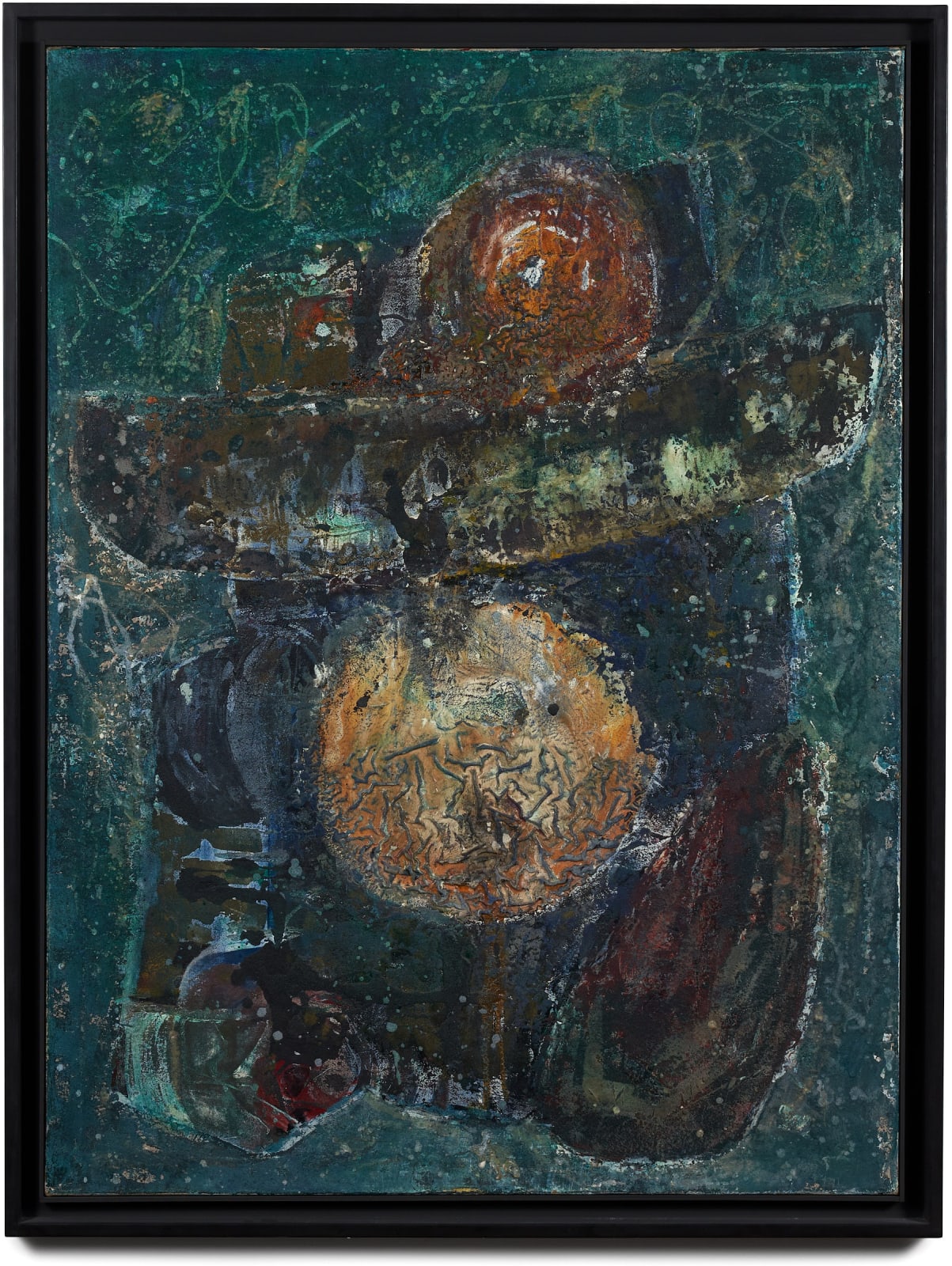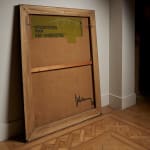Bert De Leeuw
Further images
Bert De Leeuw (Belgian, 1926 - 2007) was a self-taught painter, draughtsman, sculptor and engraver, who also did layout design and publicity work. He even set up a publicity agency and made his first paintings, followed in 1955 by paintings with mixed materials and techniques. He practised an informal abstraction, based on 'creamy' thick materials mixed with sand projected onto the canvas with an expressionist drive.
By carefully choosing his material sources and tools (impermanent and fluorescent), he strove to create the illusion of interstellar spaces.
(In astronomy, interstellar space refers to all of the space in a galaxy that is not occupied by stars and their planetary systems and in which matter and radiation is called interstellar medium.)
His first exhibition took place at the Galerie Accent in Antwerp in 1957. He was co-founder of the renowned artists' collective G58.The cover of the exhibition on the artist group G58 in 1985 was designed by him.
After the mainly Brussels-based groups Art Abstrait’and Espace in 1952 and later Formes in 1956 were the first post-war groups to give abstraction new impulses, in Antwerp, G58 would take up the torch. The immediate cause was the almost complete lack of official support for contemporary art and the anticipation of the world exhibition Expo 58.
After first organising a series of solo exhibitions at Middelheim Castle, G58 was given the chance by the city council to set up a venue in the city centre, named Het Hessenhuis, on the corner of Hessenplein and Falconrui. The building was refurbished by the participating artists to become the new home of the second wave of abstract art. This included artists like Vic Gentils, Walter Leblanc, Paul Van Hoeydonck and Jef Verheyen, among others... Reinforced by critic Marc Callewaert, a strong generation offered itself.
From previous initiatives, such as Raaklijn in Bruges, they are learning to build a bridge to the first generation of 'Pure Expression’. It is no coincidence that both Jozef Peeters and René Guiette received the honorary presidency of the Antwerp group G58. The group honoured both presidents with retrospective exhibitions. In doing so, G58, which evolved from abstract art to the new ‘informal art’, linked the 1920s (with Peeters) and 1940s (with Guiette) with the imminent 1960s.
On the other hand, the international trail of the group La Jeune Peinture Belge (founded in 1945) will show them the way to proceed. Besides France and Germany, Italian contacts in particular provided groundbreaking projects. Apart from ‘Anti-Peinture’, especially the exhibition ‘Motion in Vision / Vision in Motion’ and Zero will prove to be historic exhibitions with contributions by Piero Manzoni and Jean Tinguely.. By 1960, a dissident group named the New Flemish School led by Jef Verheyen and Paul De Vree (editor-in-chief of ‘De Tafelronde’), of which Bert De Leeuw was a co-founder, had already emerged. G58 will, strictly speaking, only exist for four years. But besides numerous (international) individual exhibitions and group shows, G58 will give momentum to a variety of avant-garde initiatives. They could be both polemical, with, for example, the historic television debate titled 'Figurative or Abstract Art’? (November 1960), and activists, such as De Vree's 'Modernist Centre’ and the film ‘Group 58’ .
Bert de Leeuw later became a laureate at the Paris Biennale, along with Octave Landuyt, Serge Vandercam, Roel d'Haese and Pierre Alechinsky.
Quote from Maurice Bilcke on 12 February 1960:
"Bert de Leeuw is a matière painter and his canvases look
like old cement walls weathered by time, into which children, as if to amuse themselves, formless line drawings would have engraved. There is almost a
magical attraction emanating from this poetic miserabilism."
In 1961, Bert De Leeuw participated in the VII th Tokyo Biennale.
In 1962, he stopped engaging in publicity to devote himself fully to art. In 1964 he worked as a free-lancer for the BRT (The Belgian Radio and Television Broadcasting Company).
He created bas-reliefs and from 1965, abstract painting gave way to sculpture. He regarded the integration of sculpture, into the living and working environment, as the artist's essential mission. He conducted a "dialogue" with the public through his work: he realised (geometric) abstract sculptures (such as totems) and combinable cube shapes in bronze and later also in polyester.
Between 1970 and 1980, he created sculptures, collages and engravings in gold, drawings composed of lines, black chalk drawings on a white background, work in mixed media and even jewellery. The latter discipline earned him the 2nd prize in a diamond competition organised by ‘De Beers’ (a major diamond company since 1888). The period 1990-1996 was characterised by cylindrical sculptures and oil on paper and blotting paper.
Later in life, Bert De Leeuw would also be honoured with the title of 'Knight of the Order' by Leopold II.
He passed away in Antwerp in 2007
Literature
Bert De Leeuw, Monografie, Antwerpen, uitgeverij Pandora, 1997, ill. p. 51; Pas, W. & G. – Arto 2000





